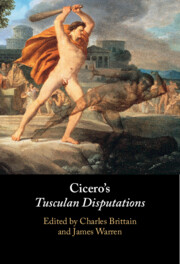Refine search
Actions for selected content:
481 results
5 - ‘Safe’ Delivery and Recovering from Birth
-
- Book:
- Making Babies in Early Modern England
- Published online:
- 12 December 2025
- Print publication:
- 29 January 2026, pp 136-165
-
- Chapter
-
- You have access
- Open access
- HTML
- Export citation
6 - Regulating Pain or Painful Regulation?
-
- Book:
- After Disability Rights
- Published online:
- 19 December 2025
- Print publication:
- 22 January 2026, pp 136-161
-
- Chapter
- Export citation

Law and Torture
- Widening the Apertures from the Doctrinal to the Critical
-
- Published online:
- 17 December 2025
- Print publication:
- 18 December 2025
The overlooked link between reproductive system disorders and depression: a cohort study in 2 million women
-
- Journal:
- Psychological Medicine / Volume 55 / 2025
- Published online by Cambridge University Press:
- 21 November 2025, e354
-
- Article
-
- You have access
- Open access
- HTML
- Export citation
Chapter 3 - Analgesia and Anaesthesia in Labour and Delivery
-
-
- Book:
- Best Practice in Labour and Delivery
- Published online:
- 16 October 2025
- Print publication:
- 06 November 2025, pp 29-41
-
- Chapter
- Export citation
No association between joint hypermobility, musculoskeletal pain and neurodevelopmental problems in a school-based sample of 11-year-old children
-
- Journal:
- BJPsych Open / Volume 11 / Issue 6 / November 2025
- Published online by Cambridge University Press:
- 03 November 2025, e262
-
- Article
-
- You have access
- Open access
- HTML
- Export citation
The problem of misfortunes
-
- Journal:
- Religious Studies , First View
- Published online by Cambridge University Press:
- 06 October 2025, pp. 1-12
-
- Article
-
- You have access
- Open access
- HTML
- Export citation
Chapter 4 - Perception and Voluntary Motion
-
- Book:
- Galen on Human Physiology
- Published online:
- 28 July 2025
- Print publication:
- 02 October 2025, pp 139-182
-
- Chapter
- Export citation
Chapter 12 - Pain in the Brain
- from Section III - Emotion Perception and Elicitation
-
-
- Book:
- The Cambridge Handbook of Human Affective Neuroscience
- Published online:
- 16 September 2025
- Print publication:
- 02 October 2025, pp 248-265
-
- Chapter
- Export citation
Beyond Myelopathy: Relieving Headache in Cervical Cord Lesions
-
- Journal:
- Canadian Journal of Neurological Sciences , First View
- Published online by Cambridge University Press:
- 26 September 2025, pp. 1-2
-
- Article
-
- You have access
- Open access
- HTML
- Export citation
2 - Research Questions
-
- Book:
- Applying Corpus Linguistics to Illness and Healthcare
- Published online:
- 05 September 2025
- Print publication:
- 25 September 2025, pp 16-32
-
- Chapter
-
- You have access
- Open access
- HTML
- Export citation
Chapter 5 - Pain, Shame, and Manliness in Cicero, Tusculan Disputations 2
-
-
- Book:
- Cicero's <i>Tusculan Disputations</i>
- Published online:
- 11 September 2025
- Print publication:
- 18 September 2025, pp 79-101
-
- Chapter
- Export citation
Chapter 5 - Some Other Senses
-
- Book:
- The Neural Structure of Consciousness
- Published online:
- 27 July 2025
- Print publication:
- 18 September 2025, pp 153-171
-
- Chapter
- Export citation

Cicero's Tusculan Disputations
-
- Published online:
- 11 September 2025
- Print publication:
- 18 September 2025
Constructing Opioid Legitimacy: The Canadian Pain Task Force’s Framing of the Overdose Crisis
-
- Journal:
- Journal of Law, Medicine & Ethics ,
- Published online by Cambridge University Press:
- 08 September 2025, pp. 1-9
-
- Article
-
- You have access
- Open access
- HTML
- Export citation
Community engagement strategies improve recruitment and enrollment in a pragmatic clinical trial
-
- Journal:
- Journal of Clinical and Translational Science / Volume 9 / Issue 1 / 2025
- Published online by Cambridge University Press:
- 24 July 2025, e184
-
- Article
-
- You have access
- Open access
- HTML
- Export citation
Chapter 11 - Disability
- from Part II - Social Contexts
-
-
- Book:
- Sean O'Casey in Context
- Published online:
- 23 June 2025
- Print publication:
- 10 July 2025, pp 120-129
-
- Chapter
- Export citation
Chapter 2.6 - Analgesia Agents
- from Sec 2 - Pharmacology
-
- Book:
- Dr Podcast Scripts for the Primary FRCA
- Published online:
- 19 June 2025
- Print publication:
- 03 July 2025, pp 234-240
-
- Chapter
- Export citation
Chapter 43 - Chronic Pain
- from Section 4 - Walking the Walk (and Talking the Talk)
-
- Book:
- Robinson and Hall's How to Survive in Anaesthesia
- Published online:
- 09 June 2025
- Print publication:
- 26 June 2025, pp 237-241
-
- Chapter
- Export citation
Efficacy of pain management for cattle castration: A systematic review and meta-analysis
-
- Journal:
- Animal Welfare / Volume 34 / 2025
- Published online by Cambridge University Press:
- 24 June 2025, e43
-
- Article
-
- You have access
- Open access
- HTML
- Export citation
